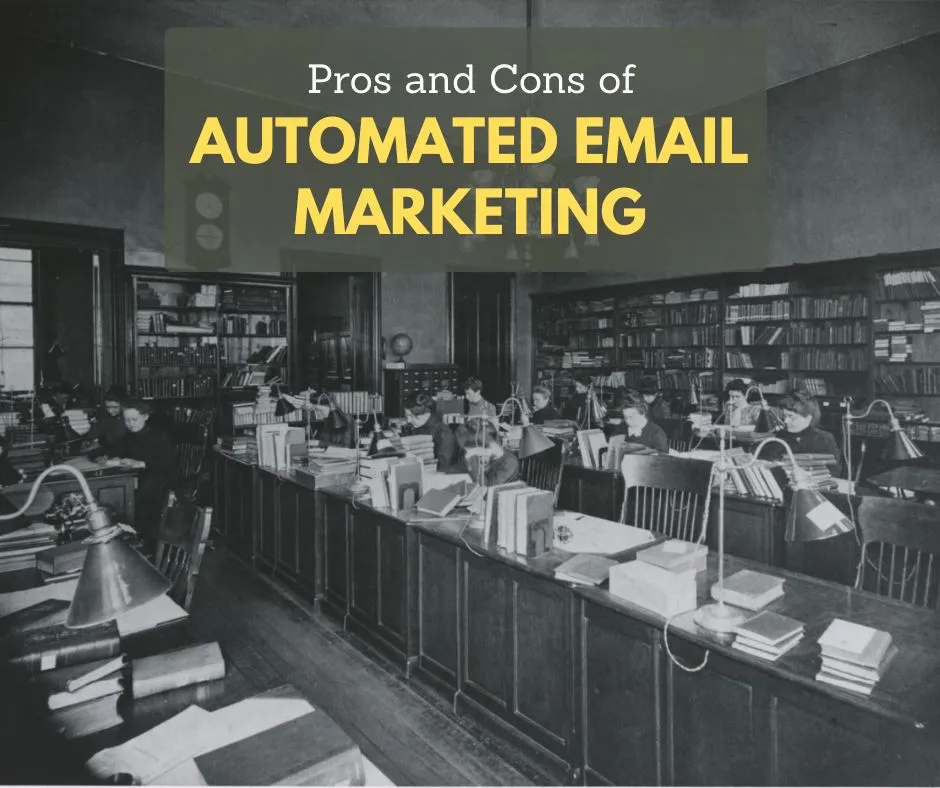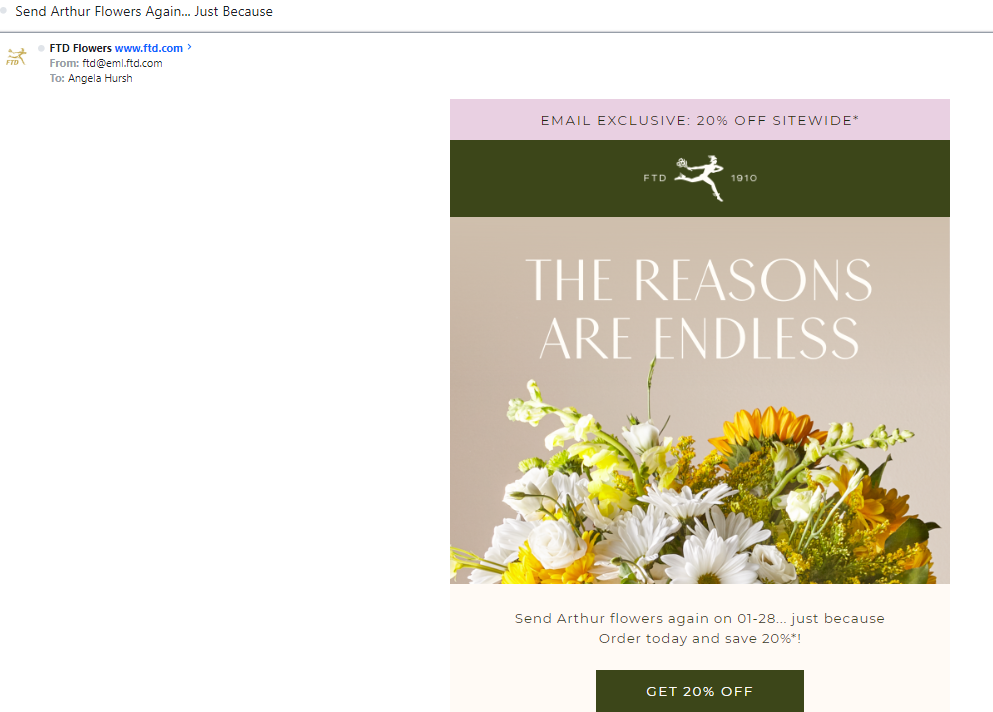
My maternal grandfather was small (he stood about 5 feet 3 inches tall) but mighty.
He returned from World War Two to a wife and four children. He made ends meet by farming, driving a milk delivery truck, and working on a road construction crew. He taught me to build fences, crack walnuts with a vise, and drive a tractor and a car.
When he died in 2016, I decided I wanted a bouquet of flowers at the funeral as a symbol of all that he meant to me. I ordered an arrangement online.
Imagine my surprise when a few months ago, I received this email.
I admit, at first, I was shocked and baffled. But I work in marketing, so I understand this email was created using automation. And then, this email made me think about the pros and cons of automation for library email marketing.
The advantages of email automation
Automated email has one big advantage for library staff: It saves time.
Automated onboarding emails, reading suggestions, and program announcements will free up your time for other work. You can create a campaign, set it, and forget it.
Experts also say that open and click rates are higher for automated emails because they are more relevant to the recipient.
The disadvantage of email automation
There is one big problem with automated emails, in my opinion. The personalization isn’t personal. It’s inauthentic. And there’s a chance it can go very, very wrong.
The email from the flower company is a perfect example. It has negatively impacted my feelings toward the flower company. If they really cared about me, and not just my business, they would have looked to see that I’d sent flowers to a funeral home. And they wouldn’t have tried to sell me another bouquet to send to my dead grandfather.
Here’s how this snafu relates to library marketing: Most automated email programs created for libraries automatically segment your audience into groups based on factors like previous card use. Those programs use algorithms that look at past card usage or reading history to predict future behavior.
But, as happened with the flower company, those algorithms are not always correct. They don’t allow for changing tastes or lived experiences. And they won’t expand a cardholder’s use of the library by introducing them to new services.
The bottom line is that past library card usage does not always predict future library card use.
For example, in the last year, my library card use has changed drastically. I’ve switched from mainly print fiction books to audiobooks. I’m now a heavy user of downloadable magazines. I’ve also recently discovered the joy of using my library card to read newspapers online (goodbye paywall!). And I’ve used my library’s Makerspace several times this year.
My life and my habits have changed. But, my home library, which uses automated email, has not sent me any emails that show they’ve noticed my changing habits. They send emails based on my pre-pandemic use of the library.
What do libraries do best? Personalized service!
Libraries don’t focus on transactions. We don’t rush our visitors. We listen and work until we get them the answer or the service that best solves their problem.
This is particularly true when it comes to book recommendations.
A reader’s interests are never set for life. And the things that are interesting about a book—the tone, pace, setting, and characters, cannot be managed by an algorithm. Reading suggestions and collection marketing can’t be replicated by robots.
So, as library marketers, we must be cautious to balance our need to save time, with the need to create a connection with our readers. And that means, if you use automated email marketing, you must always be evaluating the emails your library sends.
Ask yourself: Is this email serving my recipient with the content they want and need?
Two more potential pitfalls of automated email marketing
Irrelevant automated emails may be marked as spam by your recipients, hurting your sender reputation. Read more about how that can impact whether your email gets delivered to your recipients here.
Many programs that offer automated emails don’t allow you to add design elements that are specific to libraries. And that can be detrimental to your library’s brand. You want your community to recognize the promotional materials you make, including emails.
The advantages of manual email marketing
Good patron experience means that you encourage your email recipients to choose the content they want to receive from the library.
Your library should make your emails opt-in. This ensures your emails go to community members who want your content, which protects your sender reputation.
The opt-in model allows you to add the content to your emails your audiences have indicated they are interested in, giving your recipients control over what they receive. It also allows for flexibility to account for changing use and taste.
Finally, opt-in emails allow you to send when it’s best for your users, not for your library. All email programs offer scheduling. When you schedule your own emails, you can look at reports to see when your target audience responds best to your emails. You can adjust accordingly.
The disadvantage of manual email marketing
Time is the number one disadvantage of programs that require you to create emails manually. It takes precious time to write copy, choose images, and schedule your emails.
So, next week on Super Library Marketing: Time-saving techniques for creating library marketing emails. These tips will work whether your library chooses automated or manual email marketing!
P.S. You might also find this helpful
4 Simple Ways You Probably Haven’t Thought of To Boost Signups to Your Library’s Email Newsletter
Subscribe to this blog and you’ll receive an email whenever I post. To do that, enter your email address and click on the “Follow” button in the lower left-hand corner of the page. You can also follow me on the following social media platforms:


Leave a comment